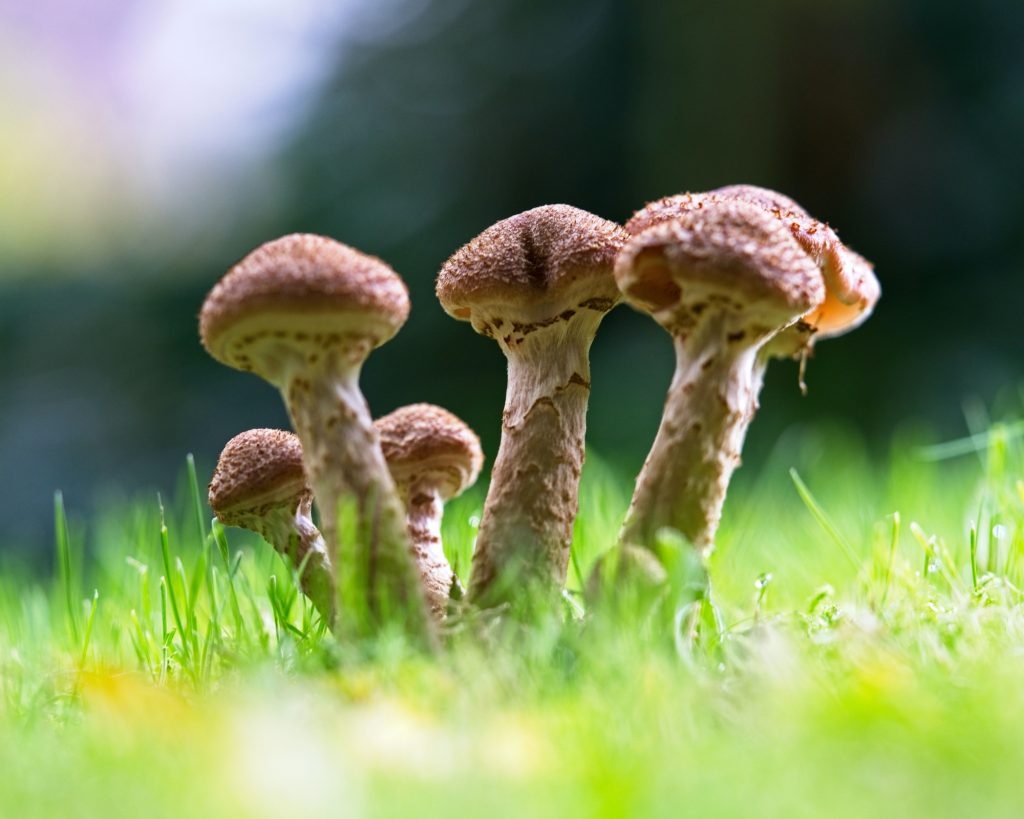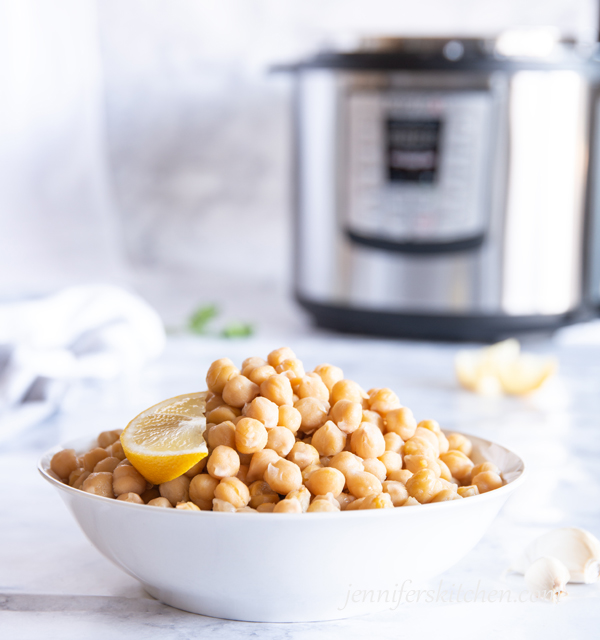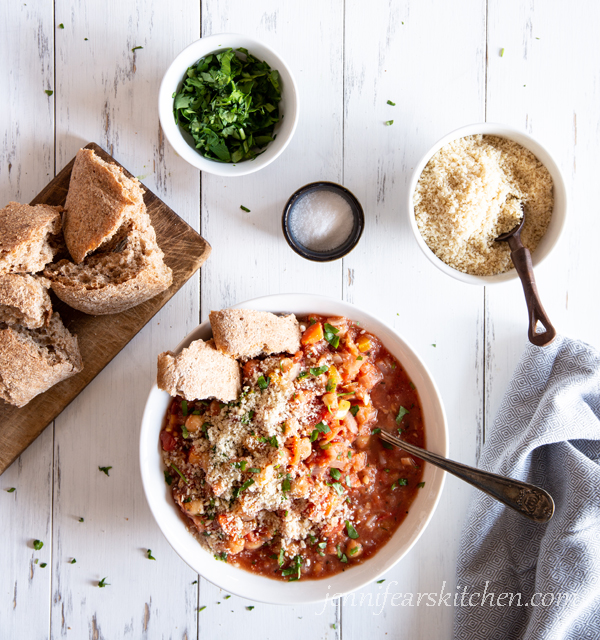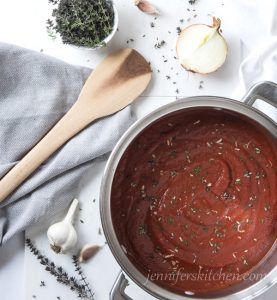Why I Don’t Eat Mushrooms

Mushrooms are commonly eaten among vegans and non-vegans alike, but many feel that mushrooms are not fit for food. Below are a few of the reasons that I personally choose to not eat mushrooms.
(Note: Before anyone starts jumping on their keyboards to chastise me for posting this article, please note that these are my personal reasons for not eating mushrooms. I am not telling you that you cannot eat mushrooms. You may eat whatever you’d like 🙂 🙂 .
You may also be interested to know that I don’t like brown sugar on my sweet potatoes either. I prefer Creamy Italian Dressing instead. 🙂 )
Vegan vs Plant-Based
While there is definitely overlap with a vegan diet and a plant-based diet, they are different.
A plant-based diet is a diet based on fruits, vegetables, whole grains, legumes, nuts, and seeds. A whole-food, plant-based diet uses only unrefined forms of these foods. This type of diet is usually adopted for health reasons.
In contrast, a vegan diet omits animal products usually for ethical or environmental reasons. Generally, vegans do not eat meat, dairy, eggs, or honey or wear animal products, such as leather, or use products tested on animals.
While I do agree with most of the ideology of veganism, I do not consider myself a vegan. Rather, I do my best to follow a whole-food plant-based diet because I believe that is the diet that God gave to humans when He created them. (See Genesis 1:29 and Genesis 3:18, which name grains, seeds, fruits, nuts, vegetables, and herbs.)
I believe that, since God is my Creator, He knows what is best for the health of my body.
Genetic Composition of Mushrooms
If you want to adhere to a plant-based diet, it is important to know what is a plant.
Mushrooms (the reproductive body of a certain phylum of fungi) are not plants. In fact, the genetic composition of mushrooms is actually more similar to humans than to plants.
Response to Sunlight
For example, when plants are exposed to sunlight, they create energy through photosynthesis. When mushrooms are exposed to sunlight, they produce vitamin D (just like humans).
Energy Storage
Much like humans, mushrooms store reserve energy as glycogen. Plants store reserve energy as starch.
Amino Acids
The length of the ribosomes in mushrooms show an amino acid that is similar to muscle. In fact, there are several amino acid sequences that are similar to heavy-chain proteins in mammals.
The protein and amino acid sequences of mushrooms are more similar to animals than plants.
Cell Walls
The cell walls of mushrooms are made up of chitin, which also composes the hard shells of insects, crabs, and other arthropods; plant cell walls are made up of cellulose.
Cell Membranes
The cell membranes of mushrooms contain ergosterol, a sterol that serves many of the same functions that cholesterol serves in animal cells. Ergosterol is not present in plants.
Chlorophyll
Plants have chloroplasts or chlorophyll. Mushrooms do not.
Though mushrooms are often referred to as vegetables, they are not a vegetable at all.
Trophic levels
Plants are autotrophic. They produce their own energy via photosynthesis.
On the other hand, mushrooms are heterotrophs (like animals), meaning they cannot produce their own food but need to get nutrition from other organisms (just like animals).
Mushrooms recycle waste material from other trophic levels. They subsist by digesting dead or decomposing remains of other forms of life. They are scavengers (like vultures in the animal kingdom).
Food chains start with primary producers and end with decay and decomposers. With each step taken away from level one in the trophic levels, there is a significant reduction in health-giving properties.
Insect Nurseries
One of the chief uses of mushrooms in nature is as an insect nursery. Mushrooms are home to the Cecid fly larvae, Phorid fly larvae, Sciarid Fly larvae, Springtails, and many, many more. So much so that the FDA allows an exceptionally large number of maggots, mites, and other foreign material in every can of mushrooms. (I realize that many commercial foods contain insects, but the number allowed on mushrooms is exceptionally large because mushrooms host so many insects.)
Health
The consumption of mushrooms is promoted as beneficial for health; however, history tells us that many foods/products have for years been promoted as healthy only to later find that they were not.
Tobacco is a good example. Tobacco was used by native Americans for hundreds of years. In the 1900’s scientists, physicians, and the general public believed that tobacco had beneficial medicinal properties. For decades, physicians recommended the use of tobacco because it supposedly would aid digestion, help with weight loss, and make one live longer.
Current science recognizes that tobacco actually does offer some health benefits. Smoking eases the symptoms of ulcerative colitis and nicotine seems to protect against the development of Parkinson’s disease. But without a doubt, there are enough negative effects of tobacco – such as lung cancer – to warrant abstinence.
Certain varieties of mushrooms (particularly common button mushrooms) contain agaritine, a chemical reported to be carcinogenic. Cooking destroys some of the agaritine, but not all. In addition, mushrooms contain hydrazine and benzine diazonium both of which are cancer causing agents. It is also known that certain non-poisonous mushrooms cause small intestinal damage characterized by flattening of the mucosa, fusing of villi, and other alterations in the cells of the absorptive surface, causing abnormalities of absorption (which can lead to leaky gut syndrome, celiac sprue, mineral or fat malabsorption, allergies, etc.).
These factors may be small, but perhaps with more research we may find other problems with consuming mushrooms. Perhaps not. But, when it comes to my health, I rather play it safe.
Conclusion
Mushrooms may be tasty, but so are many other foods that don’t fall under the category of a whole, plant-based food. I prefer to fill my plate with health-giving fruits, vegetables, whole grains, nuts, and seeds included in the diet that God gave to humans at creation.
***
Note:
The biological sciences define at least five kingdoms of living things. These are:
Monera – Examples: bacteria, blue-green algae (cyanobacteria), and spirochetes
Protista – Examples: protozoans and algae of various types
Fungi – Examples: funguses, molds, mushrooms, yeasts, mildews, and smuts
Plantae – (This is the plant kingdom) Examples: mosses, ferns, woody and non-woody flowering plants
Animalia – (This is the animal kingdom) Examples: sponges, worms, insects, fish, amphibians, reptiles, birds, and mammals
Mushrooms are in the fungi kingdom. Much of their cellular structure and function is more closely related to animals than to plants, and they are placed with animals in the monophyletic group of opisthokonts.
You my also like:
Before you go . . .
Did you know that you can eat all this delicious food AND lose weight? You can!
No calorie counting. No portion sizes.
Join my online weight loss program today!





Thank you for crafting this detailed explanation. This information certainly has given me something to think about!
Thank you. I have been recently convicted about not eating mushrooms but could not find the reason why. It was a gut feeling. Thank you for the explanation and clarification on the difference between mushrooms and plants.
Thank you, Jennifer, for your fine article on mushrooms. I think you had me at the first paragraph. There are many cancer-fighting foods that we do not eat out of principle, and we trust that God has provided everything we need in the vast array of foods in the plant world. I do believe the leaves of the trees are for the healing of the nations.
I knew there had to more than my reasoning for not liking mushrooms lol. Yuck!!
Lol!
No, they’re not too appetizing when you know what they are …
Praise the Lord! Jennifer, I did a very in-depth study on these things years ago and again recently. You are correct. Dr. Carl Baugh of the Creation Evidences Museum in Texas (I have it on video) said years ago that mushrooms, toadstools, etc., all were brought in by God after the flood as scavengers. I even have a scientific article from scientists (!) that clearly state that they are neither plant nor animal, are more animal, and just as you kindly stated they do not have chlorophyll. I can tell you factual, personal eye witness stories that would shock people who are using their wonderful brains to think and reason with. I knew a scientist who told me and a group of people that he actually took spores from mushrooms, put them in water and they sprouted tails and swam like tadpoles. (Some laughed scornfully but I did not). I found an article back in the late 1800’s where the same thing was done. I took a small pen microscope and looked at the biggest wart. It had two tiny red dots in it, which my scientist friend said was because it is alive! I heard a doctor on radio around 2008 tell how the spores of mushrooms are not seeds and do not have the structure like a seed at all. (I have this now on paper). A spore from a mushroom can cross with a bacteria (which is one cell also) and create a new life form in the human body to create warts and moles. I can believe it because years ago in 1986-1993 I was a BIG mushroom eater and developed many warts on my right and left hands, even skin tags on my neck and under my arm. Going on, I learned from a lady who owned a small health food store about olive leaf extract and started taking it back in 1999 when I got a horrific food poisoning (which stopped the sickness in 10 minutes for me). She shared with me to take 2 every day as an immune booster. So I continued taking them, 2 capsules a day, for months as an immune booster. In the first six months I noticed something amazing. ALL of my warts turned black, died, disappeared, and skin tags fell off! Back then I did not make the connection. I had stopped the olive leaf as the brand I was using went out of business and within 2 months I had a wart come up on my right palm. I researched for a good brand of organic olive leaf powdered (no extract as I learned the majority are made with alcohol) and within a month it was gone. I do not eat mushrooms knowingly. I recently reread my scientific info I gathered years ago and did not catch how the scientists say that all mushrooms (all means all) edible ones have an ingredient that is toxic in the human body. Study mushroom extract, which is being put in vegan margarine now. I make my own that melts and has no vinegar. Vinegar is nothing but the last stage past alcohol and is total putrefaction. Dr. Harold Cherne of Eden Valley Health Institute said on 3ABN Live that a person cannot be healthy when imbibing vinegar. Another ND, name withheld, said vinegar turns back into alcohol in the human body by bacteria and is why people love it, it is addicting. I want a healthy brain, liver, stomach, and kidneys.
Yeast is a fungi but one big fact about it. Yeast reproduces by budding and not by spores. God naturally put yeast on all fruits, vegetables, even grains to give us vegan vegetarians a good source of Vitamin B12. The Lord warned about the leaven of the Pharisees (false doctrines) as being evil and was not talking about yeast. One problem today is most bread in restaurants and made at home are from fine white flour and not baked at a high enough heat to kill the yeast thoroughly. Yeast produces alcohol to raise bread products. If baked correctly, it is not present. (Baking powder and baking soda are horrible too and hinders the digestion processes of the pancreas. Jethro Kloss, Back to Eden). Also, continual fine white flour bread was proven in the 1800’s to cause disease and even death. It was shown back then if a dog is given white flour products it will die in one month. Dogs have a strong acid to eat decaying, putrefying meat but white flour will kill them. In my 8th grade biology class our teacher proved how bad it is. Maggots are meant to be scavengers. She put maggots in a bowl of moist, all-purpose white flour and they all were trying to get out of it. My grandmother always baked her bread at a temperature of 425-450 to kill the yeast during baking with a big pan of water to have a nice crust. Her bread was so wonderful! People were meant to eat whole grains.
This is enough happy sharing. Thank you for ALL you do to help people be healthy. Every person has perfect freedom of choice to make a conscious decision for their path of health. I’m 70 and eat to live now and not live to eat and though we may be ridiculed or scorned we will keep on sharing for the ones who are honest in heart and want true health.
That was quite a read, Marie. 🙂 Thank you for your comment. Very interesting.
How do you know that other ingredients that you currently use won’t be discovered to be harmful later? Our current bananas are about 70 years old (and very, very artificial – made by humans, not God. look up what happened to the previous artificial banana too), way younger than fungi and therefore studied far less, yet you use them in recipes all over this site.
I’ve lived in South America and have seen the not-so-modern banana. Yes, it is different than what we see in the grocery store today, but it is still a banana.
While it is true that our food has been bred and hybridized over the years, bananas are not an artificial, modern crop.
Even though we’ve bred fruits, vegetables, grains, nuts, and seeds so they are bigger and “better”, according to the book of Genesis, these foods have always been food for humans. Mushrooms never were intended to be eaten by humans.
You are always going to lose any scientific argument when you start including instructions from your deity on what to eat. I was having a discussion earlier about taking information from your tribe vs taking it from an expert. This seems to be a prime example. Yes this is your opinion. I’ve included some facts below.
Mushrooms have about 15 vitamins and minerals, including vitamin B6, folate magnesium, zinc and potassium, says Angela Lemond, a registered dietitian and spokesperson for the Academy of Nutrition and Dietetics.
And they’re one of the few foods that have vitamin D, which is important for building strong bones, reducing inflammation and improving immune function. (Mushrooms contain even more vitamin D when they’re exposed to ultraviolet light.)
But you still didn’t explain why you chose a plant-based diet. Yes, mushrooms are not plants, but why have you chosen plant-based? Why not choose a diet based specifically on color?
And couldn’t the same argument about mushrooms “maybe” not being healthy not also be applied to any vegetable? People now thing nightshades cause inflation, perhaps other fruits/veggies do too? Why is it only fungi that are afforded this skepticism?
Regarding the number of larva/insects/etc in fungi, this is just made up junk science. Sumberge a handful of cherries in cold water for a couple hours and you’ll be horrified at the critters that come crawling out. This is even more so if you buy organic and local, which uses way less pesticides, with the trade-off being more buggies. That’s part of eating fruits and veggies!
If you just think mushrooms are gross, you can come out and say that. But to pretend it’s some sort of rational argument loses a lot of credibility.
Hi Jed,
Thank you for your comment. To answer your first question, I did explain why I have chosen to eat plant based. You’ll find that explanation in the first section of this post – the section entitled “Vegan vs Plant-Based”.
Regarding the number of larvae, maggots, etc. in mushrooms, I did acknowledge that the FDA allows a certain number of insects in commercially-prepared foods. HOWEVER, the number allowed in/on mushrooms is exceptionally large – perhaps larger than any other food. For example, mushrooms contain up to 75 mites and 20 maggots per 100 grams of canned or dried mushrooms. This is far more than other foods.
In addition, while most foods are not allowed to contain whole insects (just insect parts), mushrooms are allowed.
(By the way, I grow much of my own fruits and vegetables and I grow them organically, so I have seen first-hand that insect like to munch on food. However, the number of insects in mushrooms is far greater because, while fruits and veggies provide food for insects, mushrooms are actual insect nurseries.)
Regarding your comment about me not liking mushrooms, I actually do like them and use to eat them frequently. My decision to not eat them has nothing to do with taste but rather everything to do with my belief that they were not intended to be food for humans. (See sections entitled Genetic Composition of Mushrooms and Trophic Levels).
Lastly, please see my note at the beginning of the post: These are my personal reasons for not eating mushrooms. Just my personal reasons.
Thanks for reading.
Jennifer
At least you didn’t say they’re only edible raw. Gotta “love” people who eat raw only because they think they’re getting more nutrients, although the body can’t deal with raw chitin.
Too bad a lot of Mericans believe a god has chosen what they should eat/do/say, etc., and *their god speaks to them*.
This is a new perspective to me, so thank you for sharing. Without passing judgement, I am curious how you feel about the use of yeast and other bacteria fermented foods (I’m very much into lacto-fermentation, which relies on turning my vegetables into lactobacillus farms). I know nearly every surface of the planet is covered in yeast and other bacterial species so I don’t expect you to abstain from consuming bacteria. I just wonder if you actively use it in processing your plants and grains, or if you have any thoughts on the matter based on the passages of Genesis you’ve shared.
Hi Tyler,
Thank you for your polite and thoughtful comment.
You can find my information about fermented foods here:
https://jenniferskitchen.com/are-fermented-foods-good-for-you/
Blessings to you,
Jennifer
This line of thought is new to me, thank you for writing this. Personally I avoid it because it looks and (possibly) tastes like meat. I have also seen it causing extreme allergic reactions, so I play it safe and never tried it.
And its not only the dead remains of other animals where it gets its nutrition from. In many places, it is being grown on animal waste from slaughterhouses. As you already alluded to this, this further pushes it down the trophic levels.
On similar lines as christianity, hinduism considers it to be a ‘negative’ food (just like meat), and recommends avoiding it. Though this is usually not a consideration for me, because a plant based diet is my natural disposition.
Appreciate this info Jenn! Definitely well rounded article.